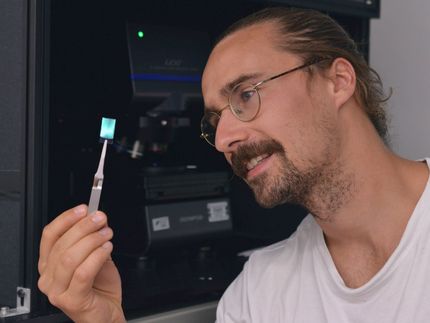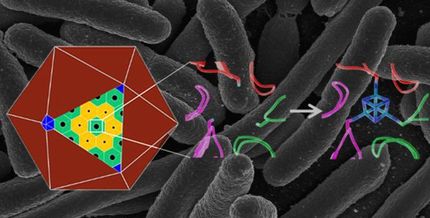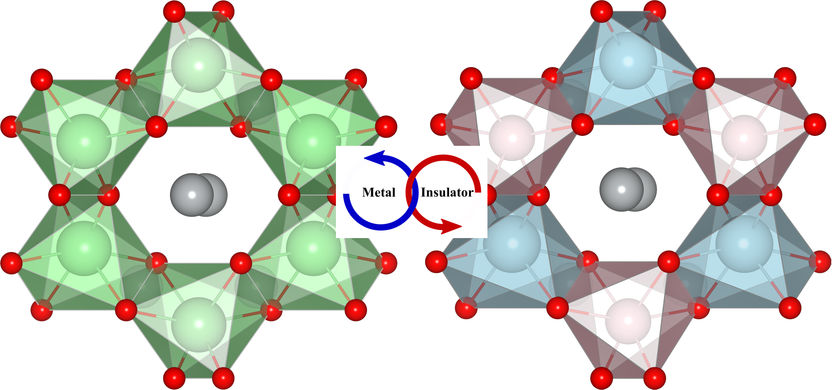Butterfly wings help break the status quo in gas sensing
The unique properties found in the stunning iridescent wings of a tropical blue butterfly could hold the key to developing new highly selective gas detection sensors.
New research by a team of international scientists, including researchers from the University of Exeter, has replicated the surface chemistry found in the iridescent scales of the Morpho butterfly to create an innovative gas sensor.
The ground-breaking findings could help inspire new designs for sensors that could be used in a range of sectors, including medical diagnostics, industry, and the military.
The research describes how the composition of gases in different environments can be detected by measuring small colour changes of the innovative bio-inspired sensor.
Professor Pete Vukusic part of the Physics department at the University of Exeter said: "Bio-inspired approaches to the realisation of new technologies are tremendously valuable. In this work, by developing a detailed understanding of the subtle way in which the appearance and colour of the Morpho butterfly arises, and the way this colour depends on its local environment, our team has discovered a remarkable way in which we can advance sensor and detector technology rapidly."
Tiny tree-like nanostructures in the scales of Morpho wings are known to be responsible for the butterfly's brilliant iridescence. Previous studies have shown that vapour molecules adhere differently to the top of these structures than to the bottom due to local chemistry within the scales. This selective response to vapour molecules is the key to this bio-inspired gas sensor.
The research team, led by scientists from GE Global Research in the USA and also comprised of University of Exeter, State University of New York at Albany, and Air Force Research Laboratory, produced these new kind of colorimetric sensors that favourably compete with conventional gas sensor arrays in simplicity, stability, and cost-savings.
At present, reliable and cost-effective sensors for detection of small but meaningful gas leaks in a multitude of industrial processes remain an unmet environmental, health, and safety goal. The research team believe this highly selective colorimetric sensor could represent a significant advancement in gas leak detection performance in the future.
Dr. Radislav Potyrailo, the study's lead author and Principal Scientist at Global Research's headquarters in Niskayuna, New York, said: "Material-design principles applied in nature impact many scientific fields. We found the origin of the unusually high gas selectivity of the wing scales of Morpho butterflies and fabricated a new kind of gas sensor based on these principles."
"These new sensors not only selectively detect separate gases but also quantify gases in mixtures, and when blended with a variable chemical background. Our next goal is to make these sensors in a cost-effective manner to offer new attractive sensing solutions in the marketplace."
Dr. Timothy Starkey, researcher at the University of Exeter, said: "Our research into these bio-inspired sensors demonstrates the huge value in applying the scientific learnings from the biological world to develop technologies for real world applications."
Original publication
Radislav A. Potyrailo, Ravi K. Bonam, John G. Hartley, Timothy A. Starkey, Peter Vukusic, Milana Vasudev, Timothy Bunning, Rajesh R. Naik, Zhexiong Tang, Manuel A. Palacios, Michael Larsen, Laurie A. Le Tarte, James C. Grande, Sheng Zhong & Tao Deng; "Towards outperforming conventional sensor arrays with fabricated individual photonic vapour sensors inspired by Morpho butterflies"; Nature Comm.; 2015
Other news from the department science
These products might interest you
Most read news
More news from our other portals
See the theme worlds for related content
Topic world Sensor technology
Sensor technology has revolutionized the chemical industry by providing accurate, timely and reliable data across a wide range of processes. From monitoring critical parameters in production lines to early detection of potential malfunctions or hazards, sensors are the silent sentinels that ensure quality, efficiency and safety.

Topic world Sensor technology
Sensor technology has revolutionized the chemical industry by providing accurate, timely and reliable data across a wide range of processes. From monitoring critical parameters in production lines to early detection of potential malfunctions or hazards, sensors are the silent sentinels that ensure quality, efficiency and safety.































































